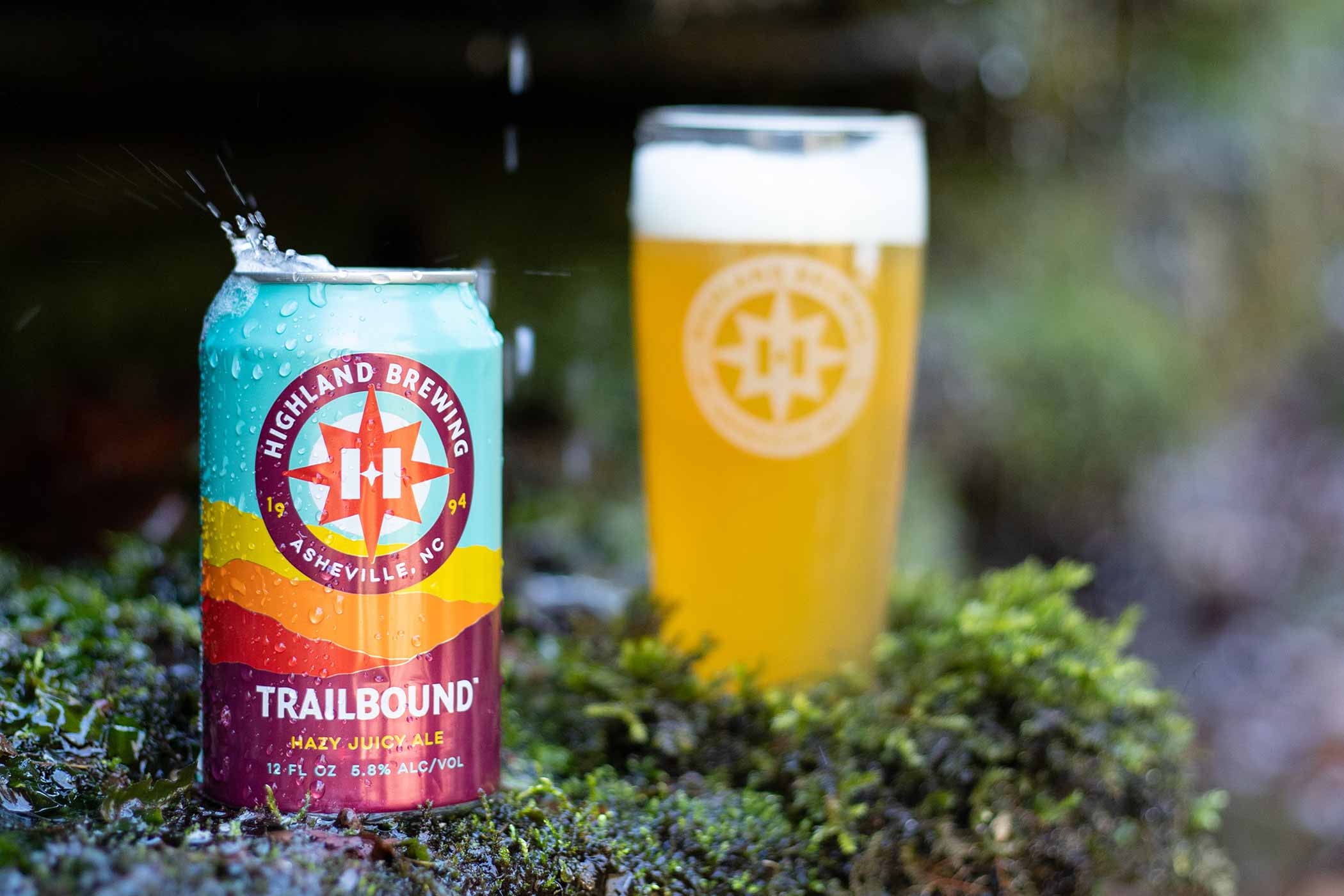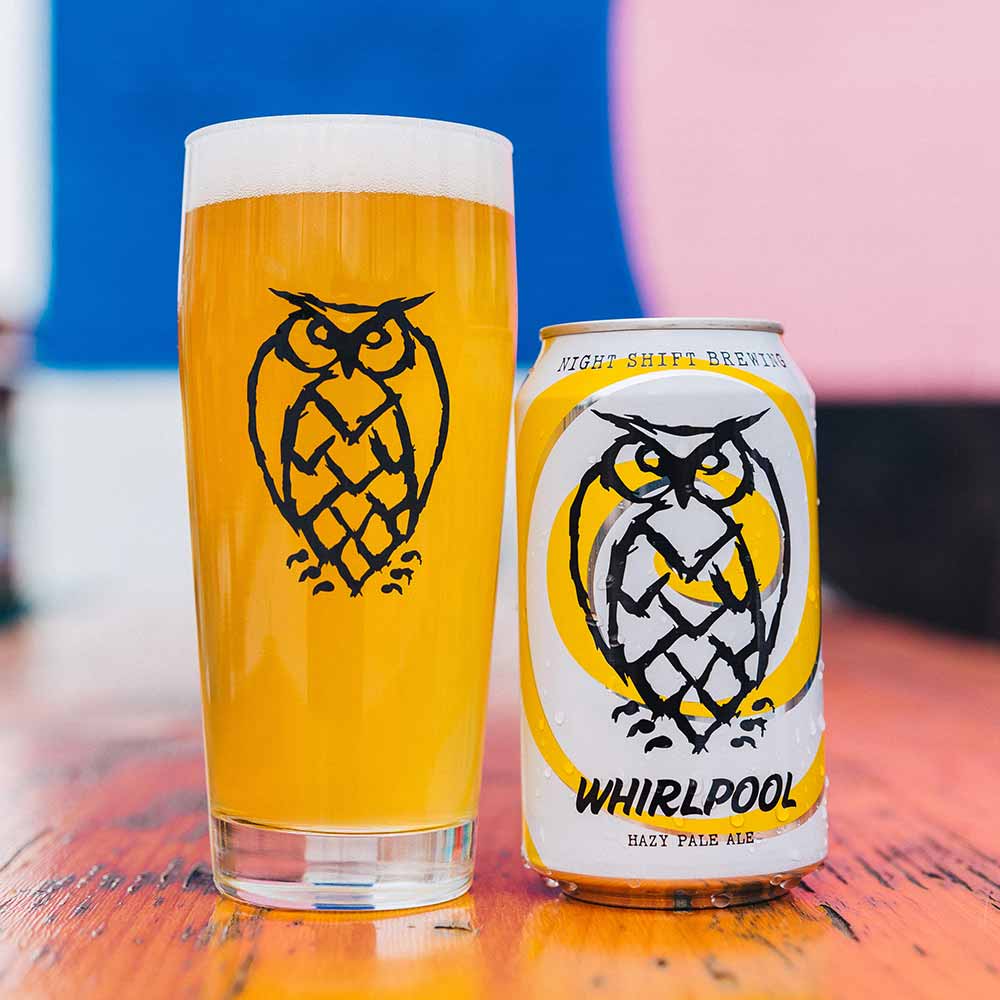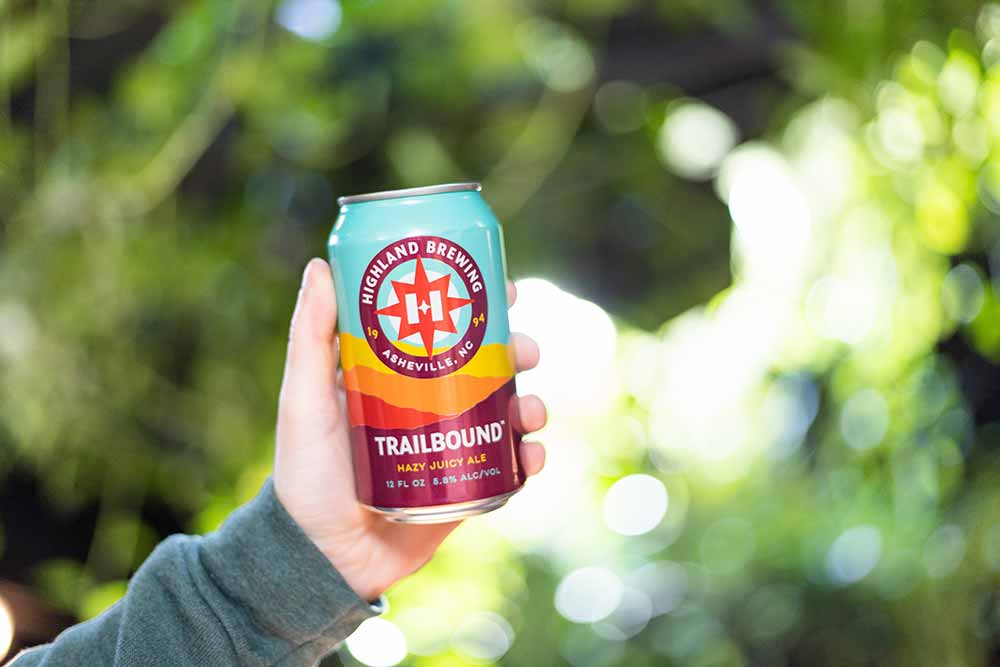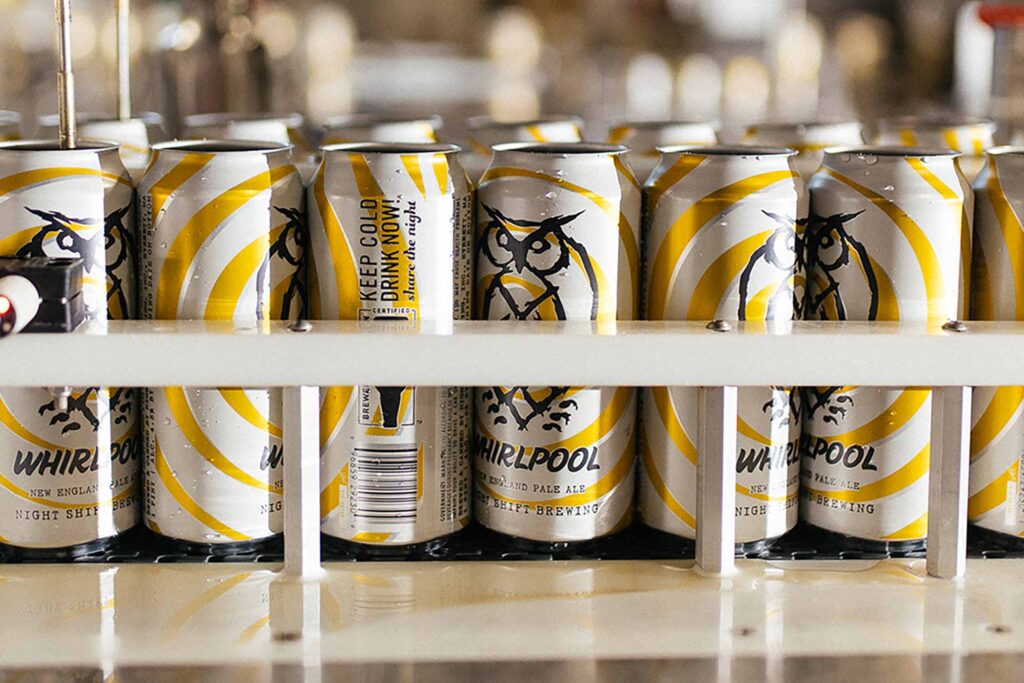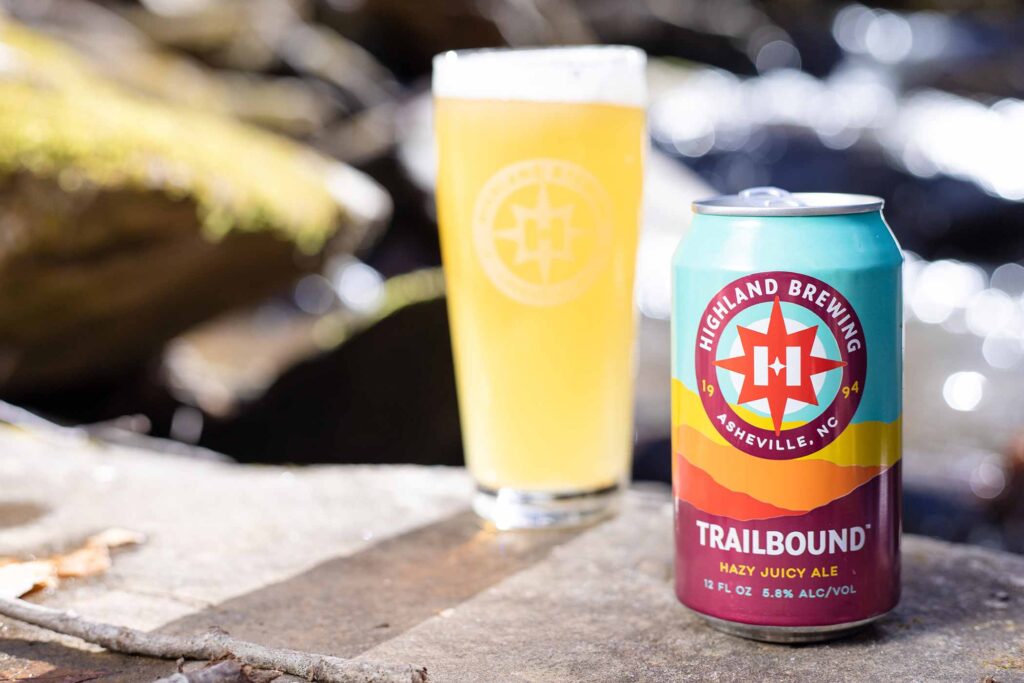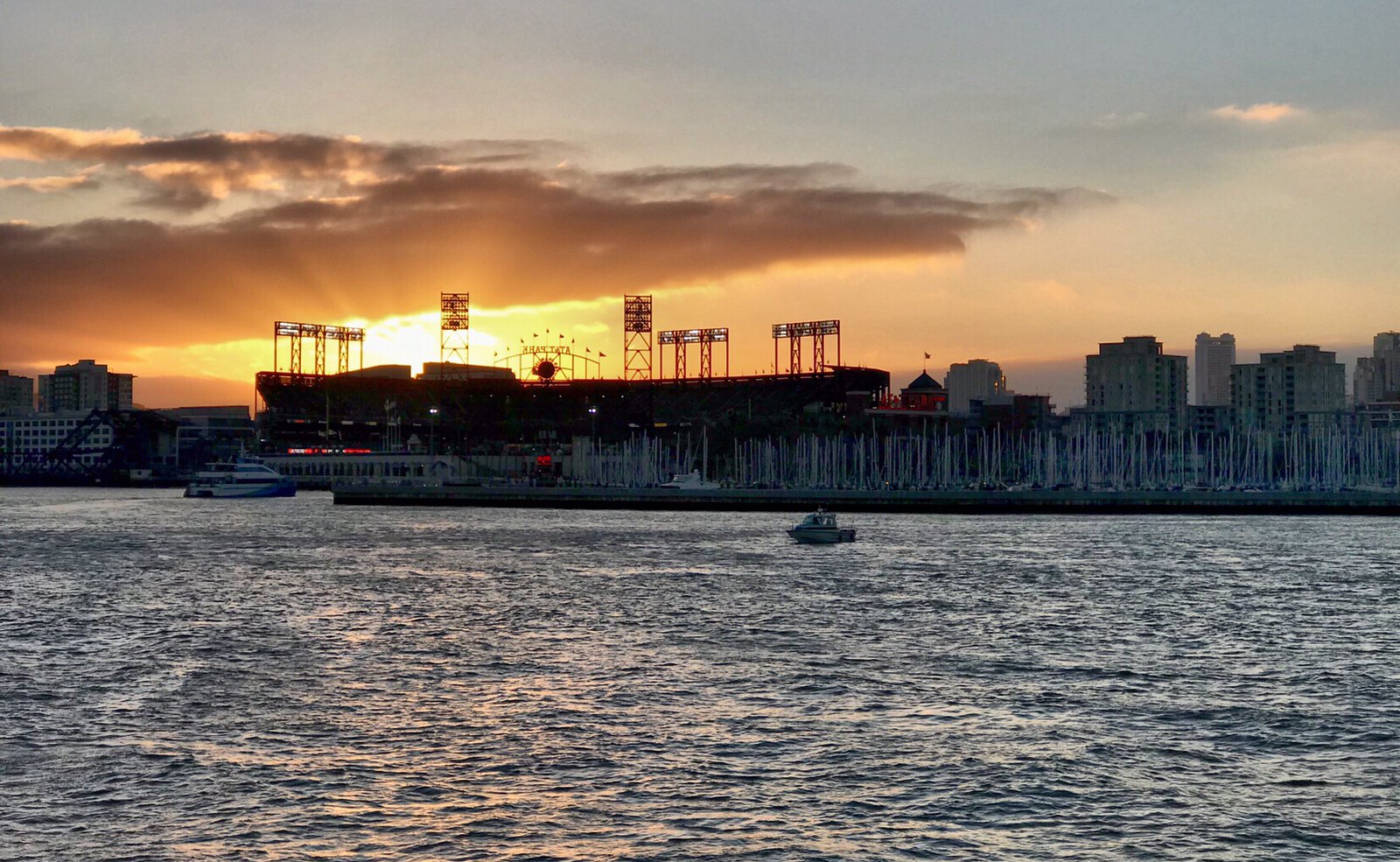Shop
What Is a Hazy Pale Ale?
If a hazy IPA and an American pale ale went on a date.
Interested in learning about other beer styles!?
What Exactly Is a Milkshake IPA?
What Is a Slow Pour? And Why It’s Absolutely Worth the Wait!
If we had asked that question just a few years ago, you might have looked at us like we were robots writing a beer recipe. ????♀️????“You mean a hazy IPA, right?” you might ask. And, of course, I know that style of beer. No, what is a hazy pale ale, dropping India? “Do you mean an American pale ale?” you wonder. We most certainly do not. Although now we’re getting somewhere.
Somewhere on the spectrum between the classic hop-forward, but not too hoppy, pale ales and the now-classic juicy, even too juicy, hazy IPAs, hazy pale ales have emerged as a new approachable beer style.
One we see more and more these days.
In addition to popping a few hazies on a draft list or in cans and probably an American pale ale, too, if we’re being honest, hazy pale ales have earned their place in the craft beer world.
Maybe still a bit in the shadows. Perhaps still unknown. But hazy pale ales are clamoring for their time in the limelight. And rightly so.
With many versions reaching the low 4, 5, and 6% ABV range, these quaffable, lush ales sometimes drink more like juice than beer.
We’re not saying we drink these beers in the mornings.
But we could. ????
High Drinkability, High Juiciness
These are the hallmarks of a hazy pale ale.
“For us, it’s more of the juice,” says Michael Oxton, co-founder of Night Shift Brewing in Everett, MA, which brewed its now-flagship hazy pale ale back in 2014.
Although, at the time, Night Shift didn’t call Whirlpool a hazy pale ale. Describing it initially as a New England pale ale, Night Shift eventually dropped that in favor of hazy because “we [wondered] does New England resonate the same way as hazy with people?” says Oxton. “Hazy is short and concise; bam, I know what I’m getting into if I see hazy.”
Yes, high drinkability and high juiciness.
“I would say a soft, tropical-forward, low-ABV [beer] for sessionability to let the hops shine,” says Josh Jiles, pilot brewer at Highland Brewing, whose Trailbound hazy pale ale has crushed it in their taproom lately.
The drinkability factor cannot be understated.
“That’s the hallmark of the style when done right and well; they’re just so high in drinkability. That’s a wonderful selling point with hazy pales more so than bigger hazy double IPAs,” says Shane Cummings, brewing innovation manager at Highland Brewing.
While brewers engineered hazies to be a more approachable gateway to the sometimes bitter bombs of IPAs, double IPAs, triple IPAs, and even quadruple IPAs, they’re still IPAs meant to include some bitter hop expression.
Hazy pale ales, on the other hand, aren’t weighed down by their three-lettered friends. Free to roam the road to fruit-ition, these beers embrace the gracefulness of pulp and saturation.
“My favorite way to explain Whirlpool is using the voice of the people we hear: ‘I don’t like IPAs, but I like Whirlpool,’ or ‘I don’t like hoppy beer, but I like Whirlpool,’” says Oxton.
Ironic almost because Oxton tells us they aggressively hop Whirlpool. But with Whirlpool, Night Shift adds hops post-boil during the whirlpool process, “so you achieve huge levels of saturated citrus aroma and flavor but don’t get that cloying, heavy bitterness, and you’re not dealing with a 7% ABV, so [the beer] doesn’t have the body of an IPA,” says Oxton. “It’s much lighter, softer, and, as we like to say, explosively juicy and crushable.”
So, What Is the Difference Between a Hazy IPA and a Hazy Pale Ale?
That’s like asking what’s the difference between a stout and a porter or an English barleywine and an American barleywine (stay tuned; that piece comes out next week).
While there are stylistic differences, the lines blur a bit, too, like when you try to color in the lines, but your crayon strays a little into the white space.
For Cummings, the most significant contrasting distinction is the alcohol content. “I think that the wheelhouse for a hazy IPA would be 6.5%-6.8% ABV,” says Cummings, but for hazy pale ales it’s “anywhere in the 5.2%-5.8% AVB range…where you still get elevated ABV with some higher carbon alcohol to provide a perception of sweetness but also structure and body along with a protein-rich grist bill and restrained IBUs.”
That’s technically speaking. But from a drinking-experience perspective, “That’s the difference: The ability to quaff more of them than an IPA,” says Cummings.
Smoother around the edges, hazy pale ales deliver all the flavors you want in a hazy IPA with a lower ABV and bitterness and higher sessionability.
Oxton compares Whirlpool to Santilli, Night Shift’s flagship American IPA (which, yes, we understand isn’t a hazy, but still suitable for comparison here).
“When I sip Santilli, there is a nice bitter hop bite at the end; it’s fine but not the same as Whirlpool,” he says. “You don’t have that bite, just mmm, I want another sip in a different way. I could crush this really quickly; while with Santilli, I take a bit longer.”
And What About the Difference Between an American Pale Ale and a Hazy Pale Ale
Well, that’s like asking what’s the difference between an IPA and a hazy IPA.
In one word: haze.
And it all starts with the malt bill—the grains going into the recipe.
What’s the most iconic pale ale you know? We’re unsure what you said if you didn’t answer Sierra Nevada Pale Ale.
That epochal pale ale pours almost a light amber in color, characteristic of American pales, thanks to darker malts such as golden or caramel-colored ones. Those malts impart a more bready, honied flavor too.
“I love Sierra Nevada Pale Ale, but it is nothing like Whirlpool; they’re completely different beers,” says Oxton. “The opposite of bright is very hazy, so we use a lot of wheat and oats in the grist to give us a super soft mouthfeel, that haze, and a little flavor.”
A protein-rich malt bill full of goodies like wheat or oats helps lend that characteristic turbidity to any hazy.
“What makes them hazy is the elevated protein tannoid haze…from the hops and barley, as well as the protein from the malt,” says Cummings. “Those are the differentiators: contributing higher levels from the protein-rich malts and elevated hopping rates either with cold whirlpool or a heavier dry hop to contribute some tannoid haze.”
In Trailbound, Cummings and Jiles start with a grist bill of two-row, malted wheat, and carapils before adding Citra and El Dorado hops.
If Crazy Follows Hazy and Haze Comes Before Craze
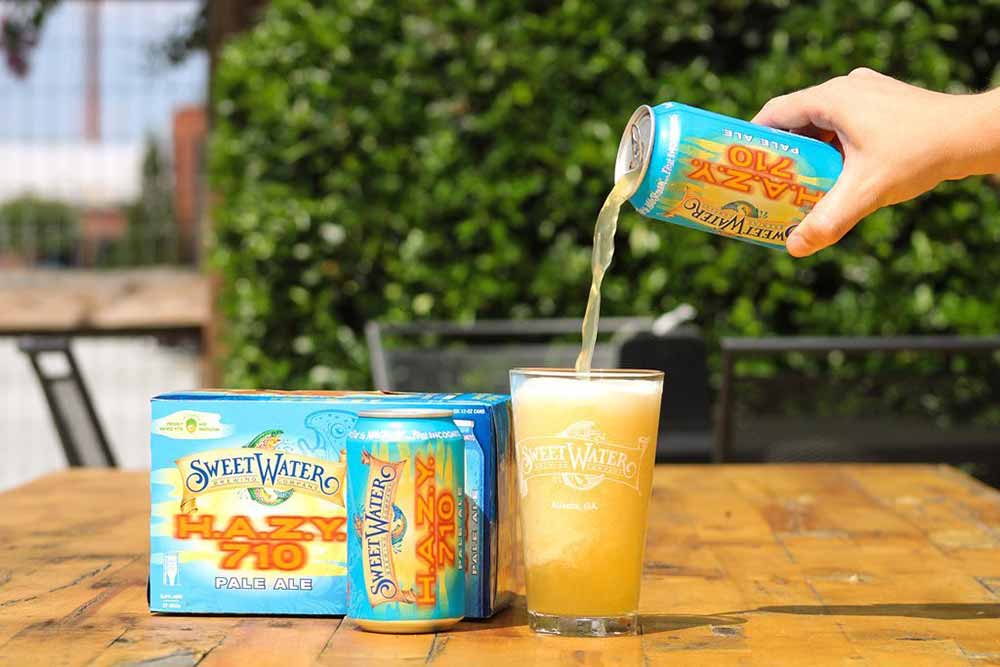
Photography courtesy of @sweetwaterbrew
It doesn’t take a rocket scientist to see that any style in the hazy family will enjoy success.
According to Cummings, Highland’s hazy pale ales seem to sell even more quickly than their IPAs.
“When people come to drink beers, they’re here for quantity,” says Cummings, who notes that Highland Brewing has a volleyball court and disc golf courses on the premises for people to play. “People aren’t trying to get ripped, but they want a few beers while throwing a disc or hanging out with friends.”
A hazy pale ale fits that lifestyle perfectly.
At 5.8% ABV, Trailbound is the kind of beer you can rip two or probably three of over a few hours and still drive home at the end of a Sunday afternoon, getting up for work the following day with no problems.
But we’re honestly burying the lead here.
Hazy pale ales are hazies.
And Americans love hazy beers. We just do. “[Hazy pale ales] continue with the haze craze going in the direction that solidified in America,” says Cummings. “They’re not going anywhere.”
But they’re evolving—every day.
The Future of the Hazy Pale Ale
Oxton emphasizes that hazy pale ale is still a tiny style subset compared to IPA, but the possibilities are enormous.
“People want a hoppy beer that’s more drinkable,” he says; noting a beer like Whirlpool is the perfect solution. “You can crush a few, and it’s not an investment… Whirlpool is closer to what consumers want…and it tastes like juice, which is just fun!”
Cummings and Jiles made it clear that the fun with hazy pale ales moving forward will lie in exploring hops, much like with IPAs.
For Trailbound, the two have found a grist bill and yeast strain they like for hazy pale ales, but the hops are always up for experimentation.
“We’ve started taking the same recipe and picking out new hops to keep the consumer more educated on some of the newer-school hops, seeing what people think and playing around with them in the tasting room,” says Jiles.
And if we’ve learned anything from the explosion of hazy IPAs in this country, we can only image the limitless possibilities ahead for hazy pale ales.
Our 8 Favorite Hazy Pale Ales to Try Right Now
Trailbound – Highland Brewing
Asheville, NC
Pouring a golden, hazy, but not murky, Trailbound has a lovely white-lacing head.
The aroma pops out of the glass first. “Sweet orange with maybe a touch of watermelon,” says Jiles.
Cummings agrees, “You get that nice, fresh watermelon rind.”
Inside the glass, “the initial slap of this one was beautiful cantaloupe honeydew, but as you let it warm up, you get more fresh watermelon rind and almost a touch of sweet cream like lassi yogurt… I get a vibrant peach character. Soft, almost like tangerine orange,” says Cummings.
Jiles adds, “Definitely tangerine but not pithy.”
This beer is straight-up orange juice without the pulp.
I tasted the beer along with Cummings and Jiles, and I picked up a bit more guava and papaya—some of those softer, creamier tropical fruits.
But it’s the texture of the beer that impresses me. “Soft, pillowy, and a clean bitterness initially up front with nothing out of balance,” says Cummings. “The whole beer has a succinct note of bitterness and clean malt graininess, but not anything grassy or out-of-place, and a honey note.
Whirlpool – Night Shift Brewing
Everett, MA
We’re unsure if we can proclaim this beer as the first hazy pale ale, but it has to be up there. In 2014, Night Shift wanted to “do something weird with hops,” says Oxton, who admits that their whole thing was no IPAs and nothing hoppy when Night Shift first started. “There was a whole world we weren’t touching,” says Oxton. “It would have been silly not to explore it.”
So Head Brewer Joe Mashburn had an idea: Using a defunct tank on the brewery floor to make a free-rise pale ale. In other words, the beer wouldn’t go into a fermenter with temperature control but an unused brite tank, and it would ferment to whatever temperature it needed. “So the opposite of what you should do in brewing,” laughs Oxton.
Oh, and instead of adding hops during the boil, Mashburn threw in a hefty amount of Mosaic and Ella during the whirlpool process. “We’re going to hop the crap out of it during whirlpool, and we’re going to let it free rise in the brite tank,” says Oxton.
What started as a little experiment or almost a joke turned into a beer Oxton and Mashburn put on tap that sold out in a day in, wait for it…growlers.
“It tasted delicious…like easy-drinking orange juice,” says Oxton.
Eventually, Night Shift brought in a German company to create a brewhouse specifically designed to handle their complex, extensive, and lengthy dry-hopping process in the whirlpool.
Today, Night Shift sub-boils Whirlpool by dropping the temperature below 300 degrees and doing a ton of whirlpool hopping (1.6 lbs/bbl). But other than that, only a little of the Whirlpool recipe changed.
“Wheat and oats add softness and body without making it heavy, just giving it this nice creamy, soft texture and a super vibrant sip,” says Oxton.
Pouring out a hazy blond, Whirlpool hits you in the face with what Oxton describes as “if you put your fingernail through a clementine and took a big sniff.”
You’ll find some of that clementine and peach on the sip. “It’s citrusy but also [has] this stone fruit peach flavor that rounds it out as you’re going through,” says Oxton.
Oxton mentions that when folks first try Whirlpool, they get many of these questions: What fruits did you put in the beer? “They always seem to think Whirlpool has fruit if they’re new to the beer,” says Oxton. “We have to convince people sometimes.”
Teacher’s Pet – Fidens Brewing Co.
Colonie, NY
A hazy pale ale with prestige comes from the brewery that nails every single version of a hoppy ale—hazies, double hazies, triple hazies, IPAs, DIPAs, etc.
Actually a pale ale version of the brewery’s iconic Jasper with Nelson, an imperial hazy with Citra on the hot side, and a dry hop of both Citra and Nelson, Teacher’s Pet certainly tries hard to impress.
And we’re here for it.
Flush with almost a lush, milky gold, Teacher’s Pet drinks with a nice balance of citrus, stone fruit, and maybe just a hint of green apple.
Superbloom – Lamplighter Brewing Co.
Boston, MA
The hazy pale ale from one of our favorite breweries in Boston includes a dry hop with Ella, Nelson Sauvin, and Simcoe for a palate that feels really plush.
For example, if we drank a glass of chardonnay, we might pick up similar tones here—green grape, nectarine, and a buttery smoothness.
Smooth and approachable, Superbloom blossoms the longer you sip, flourishing from a low 5.2% ABV. We don’t imagine this hazy pale ale will last very long in your glass.
Sky Kraken – Fremont Brewing
Seattle, WA
Sky Kraken bounces between pineapple and pepper, a beer of opposites, all in a highly drinkable maw of 5.5% ABV.
Citra, Mosaic, and Strata fuse with two-row, pale malt, white wheat, flaked wheat, malted oats, and rolled oats. With such an oat- and wheat-heavy base, Sky Kraken pours as one of the murkier hazy pale ales we’ve seen.
You could be riding a boat on a foggy day or flying amongst the clouds; Sky Kraken just has that mysterious power.
“Sky Kraken is also just a really cool name for this really cool beer that we wanted to brew using the hops we love,” writes Fremont Brewing in the beers’ Untappd description. “We hope you love it, too. Or, at least, love the Sky Kraken and become a believer.”
We believe. And you should too.
Pocket Wrench – Industrial Arts Brewing
Beacon, NY
At 4.5% ABV, Pocket Wrench is probably the most crushable hazy pale ale on this list. Effervescent and zippy, Pocket Wrench reminds us of a tall glass of mango-orange juice.
H.A.Z.Y. 710 Pale Ale – SweetWater Brewing Company
Atlanta, GA
Probably one of the more widely available versions, H.A.Z.Y. 710 Pale Ale enjoys a little extra love from INCOGNITO, a flowable CO2 hop extract meant to replace dry hopping, boosting flavors and aromas while increasing a beer’s yield.
In SweetWater’s hazy pale ale, the INCOGNITO adds a piney pop in a tropical storm. We won’t say this beer is trippy, but you probably won’t be able to put it down.
Crushable – Reuben’s Brews
Seattle, WA
Touted as a more “approachable, bright, and hazy pale ale that lives up to its name,” Crushable pretty much says it all. A grist bill of pils, pale wheat, and oats sets up Crushable for a pillowy, goose-down-feather interior, while Citra, Mosaic, Amarillo, and Azacca hops ensure you know this is a pale ale made from a brewery in the Pacific Northwest.

